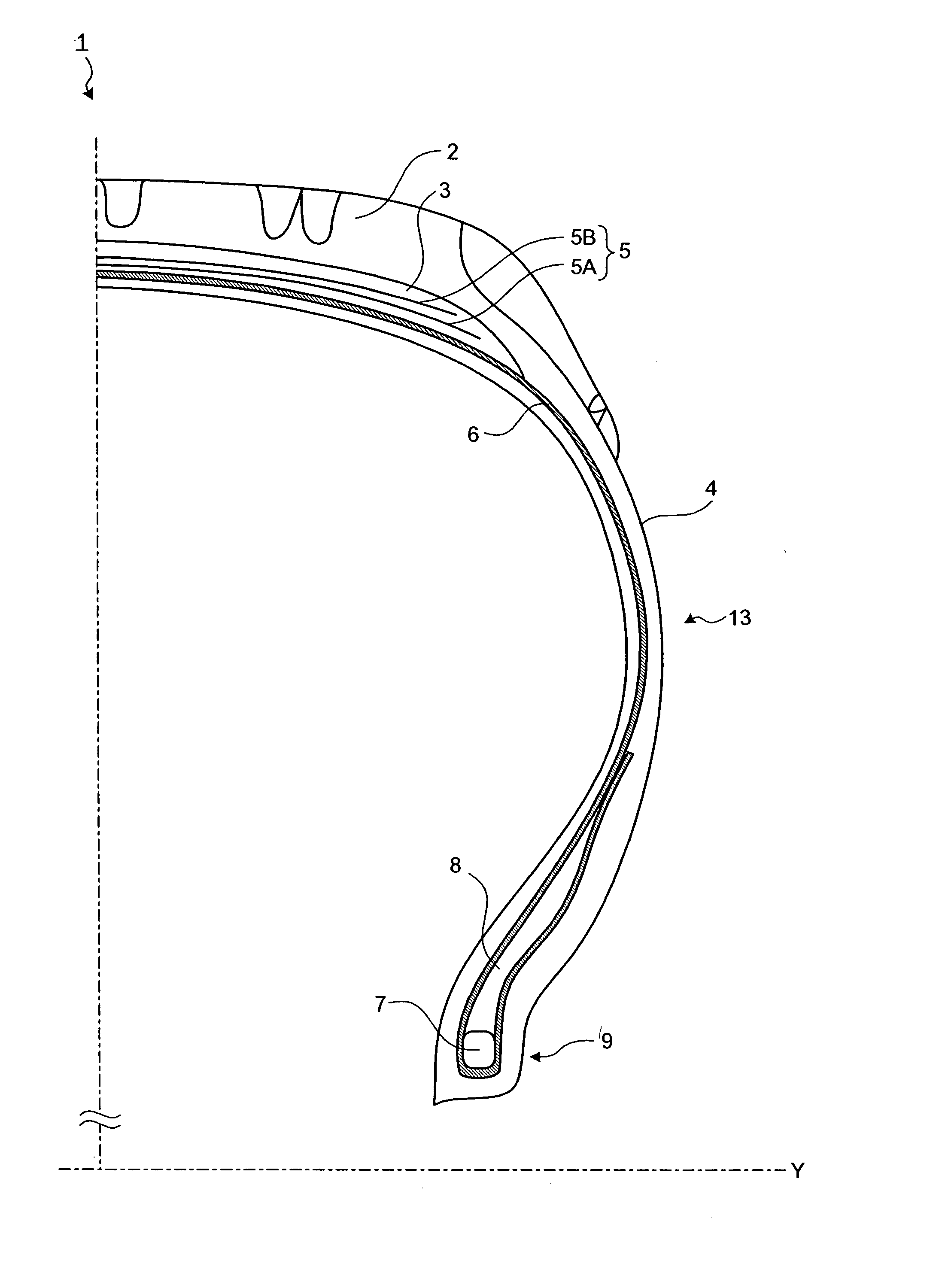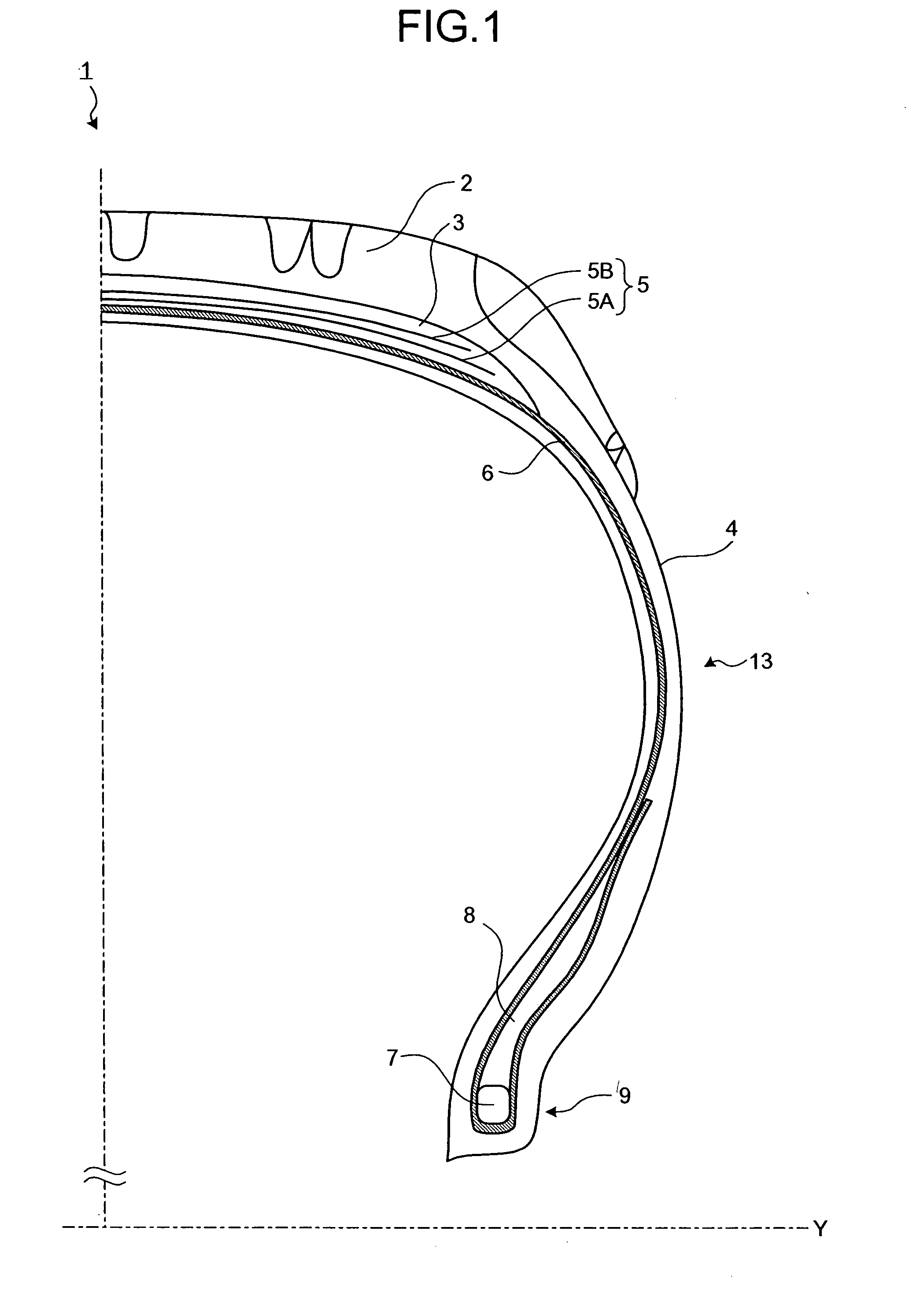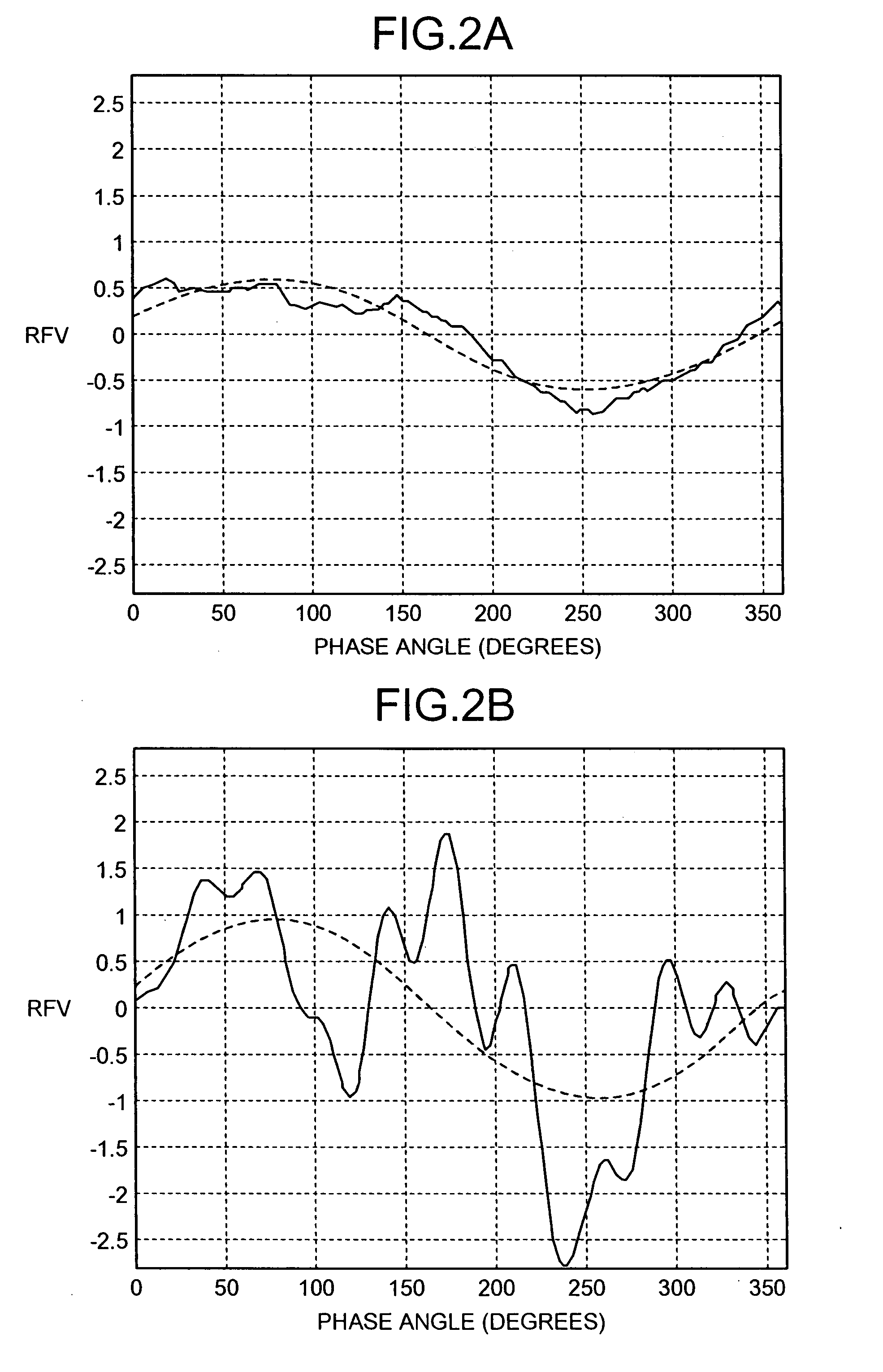Tire designing method, computer-readable recording medium, and tire manufacturing method
a technology of computer-readable recording medium and tire, which is applied in the field of tires, can solve the problems of vehicle vibration, uneven wheel and rim, and difficulty in manufacturing tires having perfectly uniform circumference tire uniformity, and achieve the effect of reducing vehicle vibration, reducing vehicle vibration, and improving tire uniformity
- Summary
- Abstract
- Description
- Claims
- Application Information
AI Technical Summary
Benefits of technology
Problems solved by technology
Method used
Image
Examples
Embodiment Construction
[0023] Exemplary embodiments of the present invention are explained in detail below with reference to the accompanying drawings. The present invention is not limited to the embodiments.
[0024]FIG. 1 is a partial meridian cross section of a typical pneumatic tire 1. The dashed-and-dotted line Y represents the rotation axis of the tire 1. The tire 1 is a complex structure including structural elements such as rubber, steel cords, and fibers as explained below. A cap tread 2 is a rubber layer that is in contact with the road surface and covers the outer surface of a carcass 6, a first belt 5A and a second belt 5B (collectively referred to as a “belt 5”). An under tread 3 is a rubber layer positioned between the cap tread 2 and the belt 5. A side tread 4 is positioned at the outermost portion of a sidewall 13. The presence of the side tread 4 protects the carcass 6 from damage due to external forces. The belt 5 is a cord layer laminated with rubber positioned between the cap tread 2 and...
PUM
| Property | Measurement | Unit |
|---|---|---|
| center angle | aaaaa | aaaaa |
| center angle | aaaaa | aaaaa |
| speed | aaaaa | aaaaa |
Abstract
Description
Claims
Application Information
 Login to View More
Login to View More - R&D
- Intellectual Property
- Life Sciences
- Materials
- Tech Scout
- Unparalleled Data Quality
- Higher Quality Content
- 60% Fewer Hallucinations
Browse by: Latest US Patents, China's latest patents, Technical Efficacy Thesaurus, Application Domain, Technology Topic, Popular Technical Reports.
© 2025 PatSnap. All rights reserved.Legal|Privacy policy|Modern Slavery Act Transparency Statement|Sitemap|About US| Contact US: help@patsnap.com



